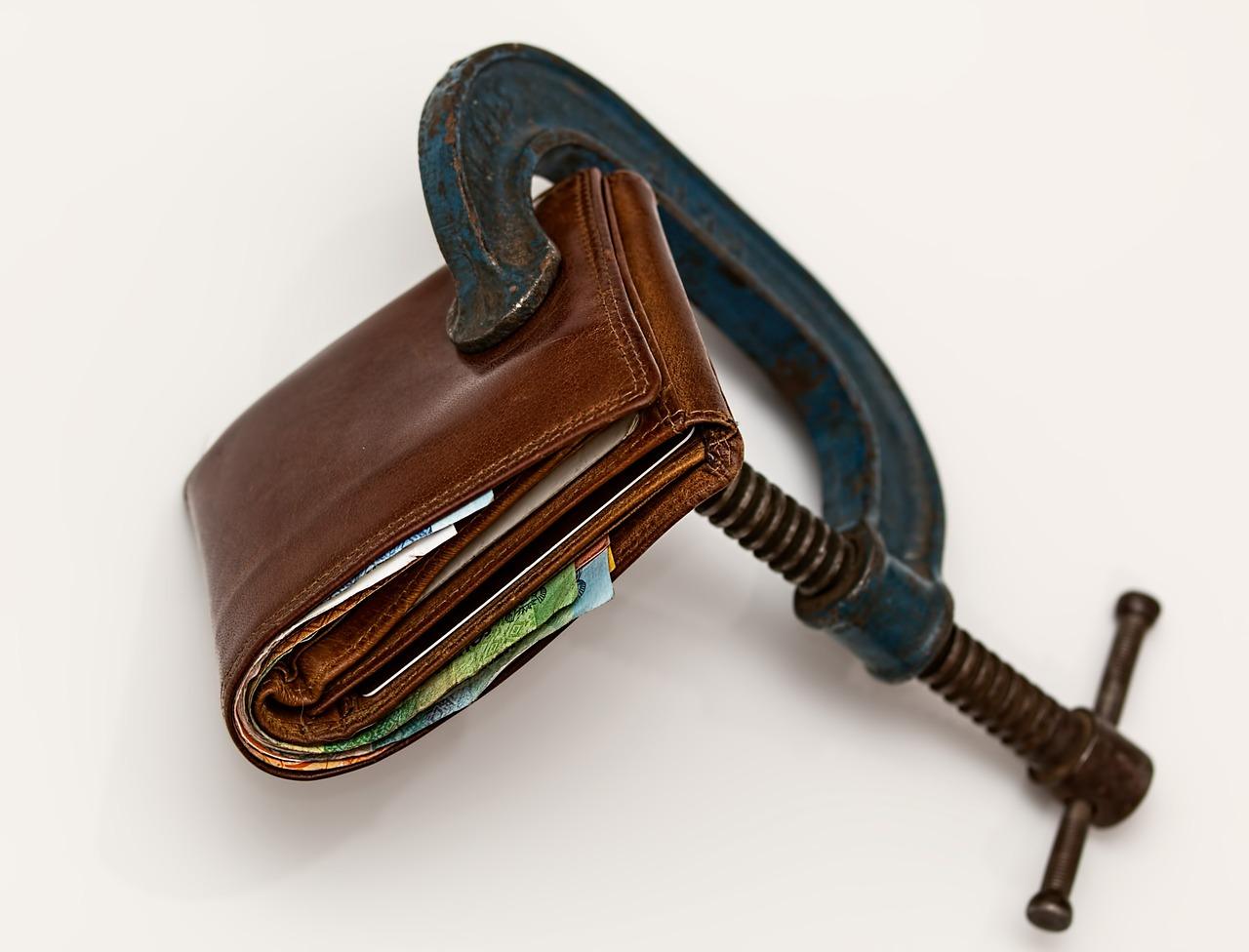The modern world economy is unstable. Every person who even remotely follows the news in the economic sphere has heard about the threat of default and its possible consequences. But not many people know what he represents. The topic of today's conversation will be the default, types, consequences and what it is I will tell in simple words.
Default is the borrower's inability to fulfill payment obligations to lender. We are talking about the impossibility of paying part of the debt or interest, and the failure to fulfill the terms of the loan agreement. This situation is characteristic of a private individual, enterprise and even the state.
In simple words, default is non-return of debt for a reason. People confuse this phenomenon with bankruptcy, which is a blunder. In fact, default is a condition preceding bankruptcy characterized by a formally confirmed inability to pay off a debt. A number of reasons lead to default. I specially systematized them.
Causes of Default
- Ill-conceived economic strategy. As a result, an economic crisis ensues, which goes hand in hand with the imbalance of the state budget. The country's government is trying to compensate for the lack of money by foreign borrowing, which increases external debt.
- A sharp change in political regime. Such changes strongly affect the country's economy, leading to a regression stage, which entails a rapid decline in revenue in the treasury.
- Income reduction. The shadow economy and high tax rates negatively affect the filling of the budget. As a result, the state is forced to compensate for the missing funds. lending at international credit organizations.
- Unseen circumstances. Military operations in the country, the global crisis and other unpredictable phenomena end in default or complete bankruptcy of the country.
Next, I will consider the types of default and the consequences for the country and population.
Types of Defaults
The reasons for default are diverse. The government’s mistakes and the measures taken by competitors can lead to bad consequences. Any thoughtless action in the field of finance and economy is fraught with the appearance of obstacles to the result and can bring the country closer to complete bankruptcy.
- Technical. Appears when the borrower does not fulfill obligations without explaining specific reasons. However, there is virtually no obstacle to the fulfillment of the conditions. The main reason for technical default is the unwillingness of the borrower pay off debt and refusal to provide documents related to escort loan agreements.
- Sovereign. The recession of the economy leads to such a default, as a result of which the country stops paying foreign debts. The consequences are long-term in nature and are represented by economic stagnation, loss of credibility among international lenders, depreciation of the national currency, deficit of investments, reduction in financial flows from exports, decline in GDP and continuous litigation.
- Corporate. Appears when a private individual, company or country is not able to pay interest on bonds.Corporate default is considered actual bankruptcy, and the debtor is protected in court from pressure from creditors.
- Cross. It appears as a result of signing an agreement with certain conditions when failure to fulfill specific points on one loan leads to default on obligations under other loan programs.
It seems to me that at this point you understood that default, regardless of type, is the result of incorrect actions in the economic and financial sphere. Even developed countries with strong economies are not safe from it.
Implications for the population and the economy
We understood the concept of default. Varieties and causes of occurrence are also considered. It is time to pay attention to the consequences of default for the population and the economy, which, oddly enough, can be positive and negative.
Negative consequences
- Refusal from debt payments negatively affects the financial rating of the country. Loan market completely independent, therefore, no one can force a state to refuse to pay loans. Without financial insurance, a country has to rely on domestic minimum reserves.
- National currency is a measure, the value of which depends on the level of confidence in the country. With default, the state’s capabilities are reduced, and the currency is impoverished in the eyes of partners. Depreciation of the currency slows down the domestic production of goods. Citizens' incomes also suffer from this. Default can lead to hunger, especially if the state is dependent on imports.
- Often default is accompanied by a complete halt in production. Almost all process chains include a foreign factor. It is about financing and equipment. A multiple increase in the cost of production due to the depreciation of the currency makes the company unprofitable. As a result, it closes, and people lose their jobs.
- Suffer from default and banks. When a country finds itself in such a situation, banking organizations lose access to foreign loans and are faced with a multiple increase in debt. As a result, banks go bankrupt, and private firms do not receive development loans. The accounts of citizens and enterprises are also frozen.
- As the state refuses to pay debts, political distrust increases, accompanied by constant refusals of cooperation. Interstate funds and other states do not lend to the country, which leads to a halt in domestic economic projects. Naturally, in the absence of financial resources, it becomes much harder to resolve political issues.
Now I propose to look at default from a different angle. As I said, the consequences can be positive.
Positive effects
- Default occurs at a time when state debts are becoming enormous. Payment of debt and interest on it is carried out at the expense of the state budget. At the same time, funds are not allocated for solving problems that play an important role in the existence of the country. In case of default, it becomes possible to direct funds to solve internal problems that suffer from a lack of funding.
- Default is a tool to increase the competitiveness of domestic production and the economy as a whole. Since people get paid in a depreciated currency and save in every way, the goods produced for external buyers become more accessible due to the reduction in labor costs and the cheapening of resources. As a result, foreign orders increase, new jobs and additional capacities are created.
- Against the backdrop of default, the country's economy is being rebuilt. Being isolated from imports and foreign investment, the state is entering a safe level of financing. We are talking about domestic consumption and domestic sources of financing. Under normal conditions, making such a transition is problematic.
- In default, there is a catastrophic fall in the financial sector.In such conditions, puffy sectors of the economy lose their working capacity, the role of production and goods increases. Default makes it impossible to organize financial distortions, due to which values acquire a real price.
- The country has a chance to negotiate with lenders regarding the reduction of the amount of debt. Creditors, trying to return funds, make concessions.
Default is not a disaster. Experts say that this is a negative factor in the development of the national economy, which contributes to the recovery of the financial field. If the country corrects mistakes and chooses the right direction of development, it will break ahead. This is an excellent chance to change everything, but ordinary citizens have to pay for it.
Examples of defaults in the history of countries
Having carefully studied history, it is clear that many countries have long been defaulting. For many states, loans are the only source of income. In this case, the lender is external and internal.
Often, people who run the state decide not to return the borrowed funds and do not fulfill their obligations. The spread of this practice is stopped by the fact that with regular default announcements no one will lend money.
England
In 1327, England faced a default. King Edward III refused to fulfill debt obligations to Italian banks, which lent a significant amount to his predecessor.
In those days, the causes of problems in the economy were diverse. For example, refusal to pay a debt was caused by lack of money or unwillingness of a strong state to pay to a weaker country. In the case of the English king, the default was caused by a reluctance to pay the debts of previous authorities.
A series of defaults began after the First World War, when many Western European states owed debt to the United States. In 1930, the British government refused to repay the debt, after which other states followed suit. England, unlike the rest, argued for the refusal of back debt by the United States.
In the 21st century, monetary relations are stipulated by regulatory acts regulating the credit relations of the parties at the international level. At the same time, the procedure for making payments and the fulfillment of obligations by the debtor is more disciplined.
France
Defaults are recorded in a new history. Even rich states refused to repay debts. In particular, the French government over the course of three centuries, starting from the 15th century, declared defaults once every 30 years. Under the capitalist system, this approach became unprofitable, since the low solvency of the state undermined confidence in the international arena.
There are cases when defaults became the cause of wars. So, Napoleon III, after receiving a refusal to pay debts from Mexico, declared war on this country, which was of a colonial nature.
the USSR
In 1918, the Bolshevik government refused to pay royal debts. By the end of the century, they depreciated, after which Russia, under the leadership of a democratic government, paid off part of the debt.
It is impossible not to note the events that took place at the end of the summer of 1998. The default of that time was preceded by a huge economic crisis.
What will happen to loans and deposits in banks in case of default
According to the current legislation, the parties are released from obligations under a loan or deposit agreement only as a result of force majeure. I will list these circumstances.
- Natural disasters - earthquake, fire, flood.
- Social phenomena - war, terrorist attack, revolution, strikes, unrest.
This means that default does not relieve lenders and borrowers of their obligations. Its consequences negatively affect the economy, which destabilizes the banking sector. As a result, the probability of losing a deposit will increase, but this does not relieve the bank of its obligation to pay a deposit with interest.
The same goes for people who have taken a loan.The crisis is not a reason to avoid repayment of loan debt. The monthly contributions of the debtors guarantee the stable operation of the bank.
Will there be a default in Russia in 2017-2018
In connection with events in the world, many are interested in whether there will be a default in Russia in the near future. As you already understood, state default is the country's inability to service external debts. The answer to this question lies in this wording.
The Russian Federation, in comparison with other countries, does not have such a large external debt. According to experts, some large companies from the Russian Federation have large debts to creditors. Even if one of the companies defaults, this does not mean that the whole country will not cope with debt servicing.
The main reason for the panic is the depreciation of the ruble caused by the imposition of sanctions. As a result, the population has increased distrust of the Central Bank. However, the measures taken were justified. At the end of 2014, the cost of oil in the world market fell significantly. Representatives of the Central Bank decided to release the national currency into free float and stopped holding the exchange rate by wasting gold and foreign exchange reserves.
Rumors regularly appear on the Internet that the Russian state is on the verge of default. In fact, these rumors are aimed at destabilizing the situation in the country, causing panic and lowering the rating of trust.
An objective analysis of the situation highlights the factors that make default technical impossible:
- Minor external debt.
- Decent stock of gold.
- The development of new markets.
- The signing of cooperation agreements with India and China.
In the near future, the inflow of foreign capital into the country will increase, which will contribute to the start of a new round of economic growth. Consequently, the prospects are bright and in no way depressing.
In addition to rumors of a possible default, there was information about the devaluation of the ruble in 2018-2019. Such rumors are groundless. Gold and foreign exchange reserves are constantly replenished and support the national currency. Consequently, the change of banknotes in such conditions is meaningless.
Summing up, I am confidently reporting that in the near future Russia does not face a default. 2017 will not be easy, but there will be no catastrophic events in the country's economy. On the contrary, the facts indicate the beginning of economic growth.
Will there be a default in Ukraine in 2017-2018?
Until recently, no one knew that the protests on the Maidan would cause the economic collapse of the largest European country. Time passed and changes in the political and economic sphere of the state showed up.
There is no single answer to this question. According to news in the press, in 2016 the default of the Ukrainian state is inevitable. If the authorities stop the war, agree with creditors and take care of the resumption of economic growth, it is possible that Ukraine will avoid this unpleasant situation.
After reviewing the economic ratings, it is clear that Ukraine’s external debt in relation to GDP is not the largest. At the same time, an increase in the body of debt is due to the devaluation of the national currency. When the amount of debt is equal to GDP, as is the case with Ukraine, the conversation is about the proximity of default. In the United States, with similar indicators, they don’t think about it, because of the constant growth of the economy.
The economy of Ukraine is stepping downhill. The severance of ties with the Russian Federation was a blow to Moscow, but Kiev suffered a lot from this. Rapid inflation bankrupted the population, and the war adversely affected the reputation of the authorities.
A careful analysis of the overall picture allows us to conclude that without changes in the economy and politics, the probability of default in Ukraine in 2017-2018 is high. Although, it is problematic to predict. For example, no one expected the Russian Federation to default in 1998.
In the summer of 2015, the Greek authorities were unable to get out of the pit. Nevertheless, they managed to find a common language with the creditors. Therefore, there is no exact answer to this question.










